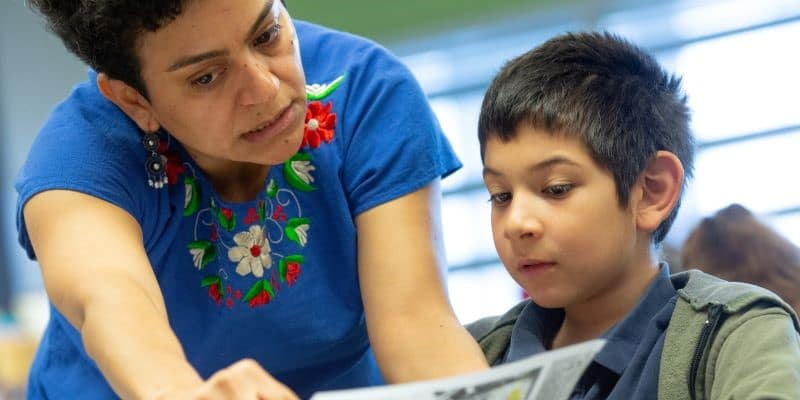If you’ve never been a teacher, there’s an unspoken reality you should know: just getting through an average day is incredibly hard work. Supervising 25 young people at once can be exhausting—just ask any parent who’s hosted a birthday party.
But teaching isn’t babysitting or entertaining. Teachers have the responsibility of moving students through complex learning activities on a tight schedule in order to ensure that each student masters rigorous academic standards. Some estimates suggest that teachers make approximately 1,500 decisions on a typical school day—a heavy cognitive load for sure. Then, after five or six hours of teaching, teachers’ often have their afternoons and evenings packed with additional responsibilities: preparing lesson plans, grading assignments, fulfilling professional development requirements, and performing other school-related duties like coaching sports teams, advising clubs, and leading performing arts groups.
In short, being an effective teacher is an art as much as a science, requiring thousands of hours of practice to hone effective intuitions.
Over the last two years, the combination of COVID, a rising tide of mental health challenges, society’s racial reckoning, and political divisiveness have made teaching an even more challenging job. Sadly, it’s not surprising that new polls show roughly half of teachers are considering quitting the profession.
There are no easy fixes to these challenges, but our research does offer some encouragement. For school systems that can find ways to break out of the confines of conventional schooling, current technology can enable new models of education that make heroic teaching more realistic and rewarding.
Much as hydraulic excavators augment a builder’s physical strength for moving earth, or high-powered telescopes magnify an astronomer’s power to see distant exoplanets, innovations in education can amplify a teacher’s capability to impact students’ lives. Teachers will always be an indispensable part of high-quality education. But the more technology can assist with basic instruction, assessment, and feedback, the more teachers can focus on more important or higher-order aspects of their work with students.
A paper I wrote a few years ago detailed how new technologies and technology-enabled models could offer solutions to some of the challenges educators and schools faced at that time. The key insights from that paper, summarized below, seem even more relevant now than they were at the time of the paper’s publication:
- When schools lack expert teachers. Innovations that commoditize teacher expertise—emulating the quality of a teacher’s instruction through resources such as technology—can go a long way in amplifying the effectiveness of the existing teacher workforce. Research shows that putting high-quality curriculum and online-learning resources in the hands of less-effective teachers can boost students’ educational outcomes.
- When expert teachers must tackle an array of student needs. Even high-quality teachers struggle, at times, to address the varied learning needs of their students. A common response is for schools to train teachers how to differentiate instruction. But implementing differentiated instruction with fidelity on a day-to-day basis can be difficult. Fortunately, computers can provide many aspects of basic content and skills instruction, empower teachers with better assessment data, provide learning resource recommendations, and give teachers more time and energy to work one-on-one and in small groups with students.
- When expert teachers need to teach more than academic content. A growing body of research shows that deeper learning and noncognitive skills play a significant role, alongside content mastery, in determining students’ academic and life outcomes. Innovations that commoditize teacher expertise give teachers greater capacity to focus on helping students develop these important skills.
Great teachers are the most valuable resource in our education system. And expert teachers’ work is unlikely to be reduced to standardized procedures or automated algorithms anytime soon. Yet, ensuring that every student has access to excellent teaching—even amidst rising challenges and teacher shortages—seems much more within reach when we think creatively about how to use technology to reimagine instructional models and expand the capacity of teachers.
Photo by Allison Shelley for EDUimages.



